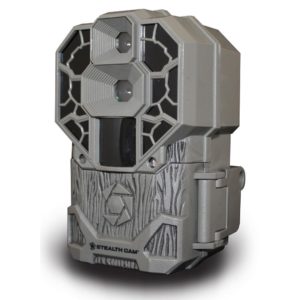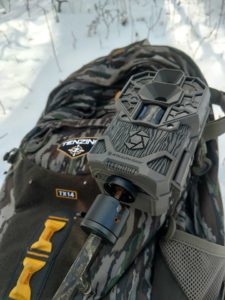Serious turkey/deer hunters will use all the technology they can get their hands on. One of their favorite and most valuable tools is a trail camera. Trail cameras are a great preseason and during-the-season scouting tool and should be highly valued on the list of what to keep in your vest. They allow turkey hunters to pattern and track gobbler movements and favorite haunts without being in the woods for hours on end, potentially spooking nearby turkeys and ruining a future hunt. Just getting a few clips of a gobbler crossing a field or feeding in a freshly planted AG field can cut your guessing game in half for your next hunt.
Valued Video Mode
Whether you’re preparing to hunt these turkeys the next day or the following week, or simply study their patterns throughout the day to put a game plan together, being able to see more of them and get a fuller idea of their attitudes can only help. Video mode not only lets you pick the best stills out of potentially minutes of footage, with the potential to arrive at much better shots, but they sometimes present information about a gobbler’s particular habits, movement, and looks that could never be derived from an individual photo. For this reason, video footage is, in an optimist’s eyes, the best possible choice for your trail cameras for scouting spring gobblers.
Stealth Cam has broken the mold with their new DS4K camera. This new trail camera is capable of taking images at 30 megapixels; yes, you read that correctly, 30. Additionally, the DS4K records 4K video. Add that to a long list of other capabilities, and this camera is worth trying out. It may become your new favorite turkey hunting secret! http://www.gsmoutdoors.com/shopping/stealth-cam/4k-series.aspx
FEATURES:
Camera Placement
Identifying the best place for a trail camera on a spring scouting trip can be tricky and usually involves some trial and error. Possible locations for patterning gobblers include fence line or hedgerow junctions, food or water sources, natural clearings, old logging roadbeds, bait stations (where legal), treestand/ground blind locations, green fields or freshly planted fields and natural funnels. These same cameras can also be useful in determining the number of gobblers in a specific area. Any place you can legally and securely place a camera can lead to great scouting footage as long as you consider a few things prior to placing a camera.

- Location – A gobbler will prefer adequate food and water source that is in a more remote area where human presence and pressure are less and he can show off for the ladies. Keep your eyes open for this type of area during your scouting trips. When you do find such a spot, place more than one camera, and leave a camera or two in another area to see if there is a different gobbler or the gobbler you are hunting in the area.
- Don’t Be Cheap – Having high-quality batteries and a high-quality, high-capacity memory card can make all the difference in the world in keeping the camera in optimum operation.
- Mounting Height – A well-aimed camera mounted at the proper height will help maximize the chance of capturing high-quality photos and videos.
- Aiming – Cameras should be aimed in such a way that maximizes the time animals are in the camera’s detection zone.
- Mounting – I prefer my cameras to be firmly mounted to something solid like a log, tree, or fence post. Placing a camera in the middle of a field with the aid of a stick can also be very productive for capturing gobblers strutting or following hens.



















![The Best Deer Camp Chili [VIDEO] Deer Chili Ingredients, Tomatoes, Chili Spices](/wp-content/uploads/2015/10/Deer-Chili-Deer-Camp-Recipe-218x150.jpg)
![How to Call Elk Early in the Season [VIDEO]](/wp-content/uploads/2016/08/byers003-218x150.jpg)




![Idiots Disturb Hunter: How Would You Have Handled It? [VIDEO]](/wp-content/uploads/2015/10/DSC00110-e1474487693878-100x70.jpg)
![Albino Buck Shocked to Shed His Antlers [VIDEO]](/wp-content/uploads/2015/10/AlbinoDeer-100x70.jpg)